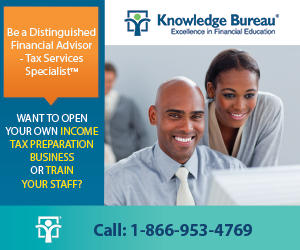Last updated: September 27 2016
Increase Investment Returns with Year-End Tax Planning

It’s too bad so many people miss out on year-end tax planning for the family. Tax planning is about what you keep: what’s left of your income and capital after taxes are paid. Now is a great time for advisors and clients to review what can be done to lessen this year’s tax load.
Understanding your lifetime tax obligation is an important motivator because it underscores the magnitude of tax savings possible. Here’s a reality check: Find the amount of taxes paid last year on Line 435 of the T1 tax return. Now multiply that figure by an average working lifetime of 40 years. It’s probably a big number. In families where there are other working adults, the number can be huge.
The conclusion is not difficult: The tax burden we bear over our lifetime is very costly—not only income tax, but also all the other taxes we pay on consumption, property taxes, sin taxes and so on. But for most families, the income tax they pay year over year is their single greatest lifetime expense. The good news? Income taxes are also the only type of taxes for which there is an option to rearrange your affairs—within the framework of the law—to pay the least amount possible. You need only pay the correct amount, not more, and can use tax planning techniques legally available to you to reduce significantly the family’s lifetime tax bill. It’s your right as a taxpayer.
The final quarter of the year—October to December—is a very good time to review what can be done to make sure this year’s tax liability is as low as it can be for every member of the family. If you are a tax or financial planning professional, this is a critical time to see your clients.
Start with some tax literacy. My rule on this has always been simple: there is no such thing as a stupid tax question, especially at year end. For example, most people don’t understand what tax bracket their income falls into. That’s important for high-income earners who are subject to a new high-income tax bracket with a 33% federal tax rate. It’s also important for middle-income earners, who have received a tax reduction in their brackets.
When you understand your marginal tax rate—how much tax you’ll pay on the next dollar you earn—you’ll carefully choose the type of income that provides the best tax results. Most people don’t know that income diversification is a great way to save tax dollars. That is, different income sources are taxed in different ways. To build wealth efficiently, the focus is on those assets or investments that have the lowest tax cost at the time of investment, during growth periods and at withdrawal or transition to the next generation.
Income splitting, income deferral and income diversification all can add to a family’s net worth. So can the refundable and non-refundable tax credits a family may qualify for. This year, family income splitting has been discontinued; but a more generous Canada Child Benefit has been introduced for some families. Investing the money in the hands of a child can render resulting investment earnings tax free, provided the money in the account is not tainted by funds sourced back to an adult.
 |
Refundable and non-refundable tax credits can also grow when RRSP planning is introduced to the family. RRSPs will reduce family net income, the figure upon which tax credits are based.
A bigger tax refund or more tax credits in the pocket make it possible for taxpayers who are at least 18 and residents of Canada to invest more tax-paid funds into the wonderfully tax-efficient TFSA. All earnings are tax exempt and TFSA contribution room never dissipates, if the money is withdrawn to fund a certain need. Lots of Canadians have underfunded their TFSA; those who have never contributed have $46,500 in investment room this year. Perhaps an inheritance or severance package would fit nicely there.
In many cases, paying investment costs like interest or management fees is a necessary component of the wealth building process. The lower the fees and costs, the easier it is for money managers and lenders to add long-term value to family wealth. That’s important, too, because certain other wealth eroders are uncontrollable: the cost of inflation, for example, or unexpected risks from currency fluctuations or political change. However, in some cases, investment costs are deductible as a carrying charge.
And don’t forget: there may be no need to pay that final quarterly tax instalment on December 15 if your income levels were reduced from last year’s results.
Astute advisors will help their clients estimate their income and the correct amount to pay. A tax specialist will take the time to analyze investment results, topping up tax-efficient investments, and assembling receipts to take advantage of the myriad of new tax preferences available this year—from home renovation tax credits to teacher’s school supplies, charitable donations or medical expenses, every little bit helps. Business owners will want to review whether to buy a new car, or other assets for use in their enterprise for an additional write-off before year end.
To more rapidly acquire, grow, protect and transition sustainable family wealth, advisors and clients should consider a proper order of investing now. This year end, consider what should come first—the RRSP or the TFSA, the RESP or the RDSP, interest- or dividend-producing investments—and whether any capital losses be harvested to offset taxable gains.
Evelyn Jacks is President of Knowledge Bureau and author of 52 books on tax and personal wealth management. Meet Evelyn on the Year-End Investment and Family Business Planning Workshop tour this November. Follow Evelyn on Twitter at @EvelynJacks.
©2016 Knowledge Bureau Inc. All Rights Reserved.





